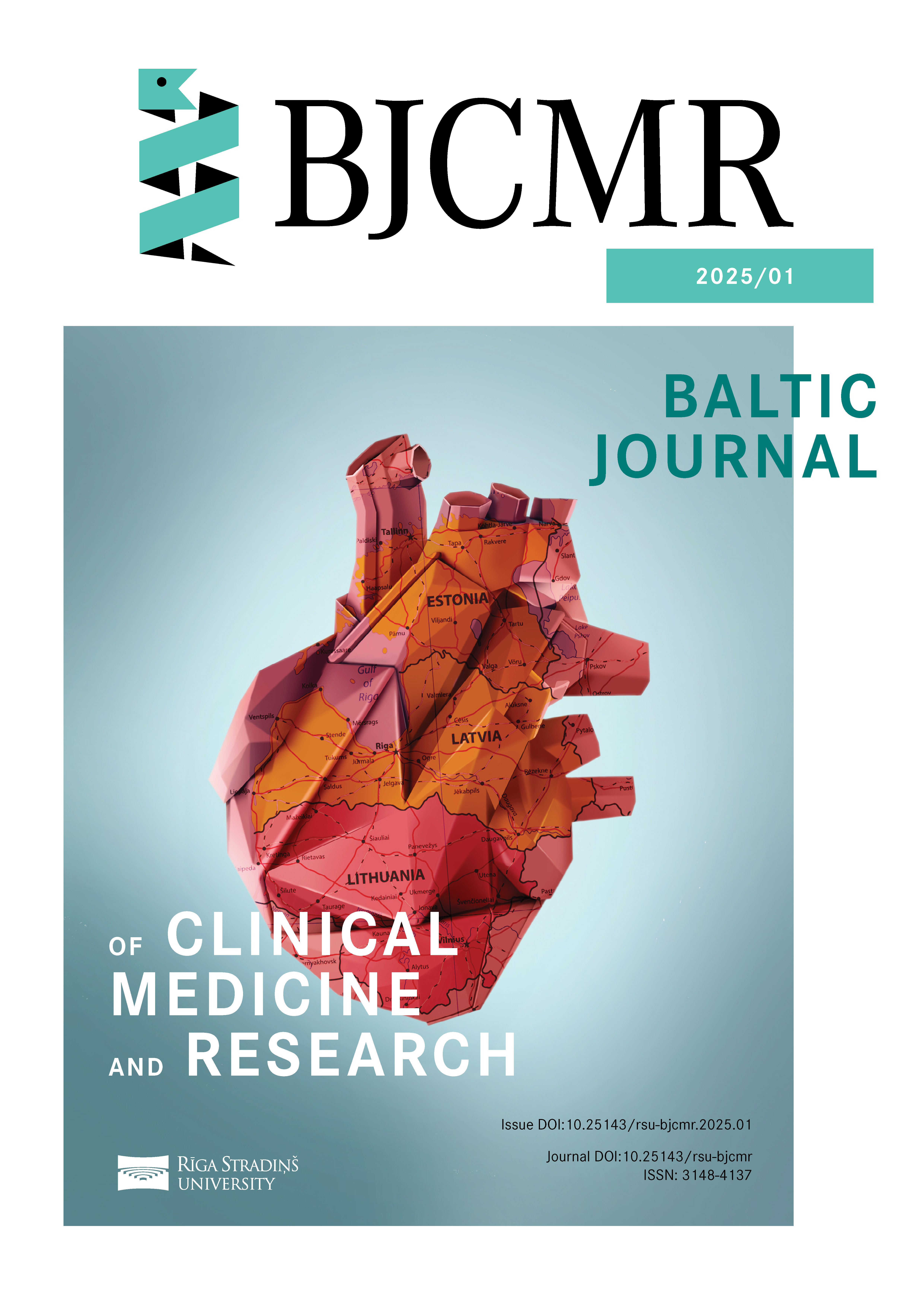The The Development of Criteria for Identifying Keratoconus Risk Group During the Initial Ophthalmic Examination
DOI:
https://doi.org/10.25143/rsu-bjcmr.2025.01.024-029Keywords:
keratoconus, astigmatism, mean keratometry, delta keratometry, allergy, asthma, dermatitisAbstract
Author: Milana Solomatina1; Prof. Guna Laganovska2; ophthalmologist Jana Gertnere3
- Riga Stradiņš University, Faculty of Medicine, Latvia
- Pauls Stradiņš University hospital, Department of ophthalmology, Latvia
- Solomatin Eye center
Keywords: keratoconus, astigmatism, mean keratometry, delta keratometry, allergy, asthma, dermatitis
Objectives: There has been an increase in the number of patients diagnosed with keratoconus in Latvia in recent years. The pathology from the list of rare diseases is becoming more prevalent, and must be timely diagnosed, to prevent further progression. The objective of the research was to understand if it’s possible to develop specific criteria, by using data from anamnesis and measurements provided by autorefractor, that would help to identify a risk group which requires more specific and detailed examination.
Methods: A retrospective case-control and analytical study included 100 patients with keratoconus diagnose and a control group of 100 patients who had myopia. Data about autorefractometer measurements and accompanying conditions were obtained from the outpatient medical records. Calculations for delta keratometry and mean keratometry were performed using Excel, comparison of autorefractometer measurements of patients from both groups was made using Mann-Whitney U Test. Chi-square or Fisher’s test were used to find out if there is an association between keratoconus and accompanying conditions.
Results: The study revealed a statistically significant difference in the astigmatism (p<0,001), mean keratometry (p<0,001), delta keratometry (p<0,001) distribution between the keratoconus and control groups.
There is no statistically significant association between keratoconus and endocrinological diseases (Fisher’s exact test, p=0,065), keratoconus and dermatological diseases, Chi-square test, ᵪ2(1, N=200) = 1,418), p=0,234), keratoconus and asthma ᵪ2 (1, N=200) = 3,191, p=0,074), keratoconus and allergy ᵪ2 (1, N=200)=2,098, p=0,147).
Conclusion: Astigmatism, delta keratometry and mean keratometry values appeared to be statistically significant, so these parameters may serve as diagnostic criteria. Accompanying
conditions didn’t show statistically significant association with keratoconus. That’s may be because a) some patients didn’t provide full information about themselves, b) the sample size should be larger.
Downloads
Published
Issue
Section
License
Copyright (c) 2025 Baltic Journal of Clinical Medicine and Research

This work is licensed under a Creative Commons Attribution-NonCommercial-ShareAlike 4.0 International License.


